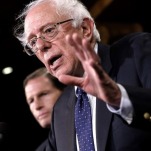These college roommates made six-figure incomes recruiting Lyft users
As Myles Hunter recounts how he and his roommate, Ari Stiegler, made six-figure incomes during his senior year at the University of Southern California, he sounds like he still can’t quite believe it really happened. “It’s a crazy story,” he says. “This is the most money we’ll ever make with this little time put into the effort.”
Their windfall came from work they did for pink-mustached ride-sharing service Lyft — not as fist-bumping drivers but as user recruiters. “We personally recruited tens of thousands of new Lyft users,” says Hunter, 23, by phone. Lyft paid them up to $20 per person who signed up — in real money, not in ride credit. Hunter paid off his $30,000 in student loans, bought a BMW, and took a trip to Croatia, all while “living like a king” in Los Angeles, including “weekly lobster business meetings.”
It started in 2013. “Uber came on the scene and asked club promoters to help them get users,” says Hunter. One of his fraternity brothers started recruiting for Uber, making cash for every user he got to download the app. Hunter and Stiegler thought they could make more by helping out Uber’s lesser-known competition which they assumed would be even more desperate for users. Stiegler emailed Lyft’s general contact address in October of 2013 saying that Uber was paying recruiters $15 per user, and suggesting Lyft pay them $20. Somehow it worked. “We told them that we were really skilled at promotion and would get them tons of users,” says Hunter. “We were business majors, but we are just both real hustlers.”
They are either expert growth hackers, or experts at hacking Lyft’s growth hack. While reluctant to share their “proprietary” strategies for user recruitment, Hunter says some of it was done through email lists, passing out flyers, and Facebook ads promising a free ride to anyone who downloaded Lyft. At least one of their ‘bread-and-butter tactics’ was regarded as too spammy by Lyft engineers, who complained to Lyft’s growth team about what they were doing.
-

-

-

-

-

-

-

-

-

-

-

-

-

-

-

-

-

-

-

-

-

-

-

-

-

-

-

-

-

-

-

-

-

-

-

-

-

-

-

-

-

-

-

-

-

-

-

-

-

-

-

-

-

-

-

-

-

-

-

-

-

-

-

-

-

-

-

-

-

-

-

-

-

-

-

-

-

-

-

-

-

-

-

-

-

-

-

-

-

-

-

-

-

-

-

-

-

-

-

-

-

-

-

-

-

-

-

-












































































































